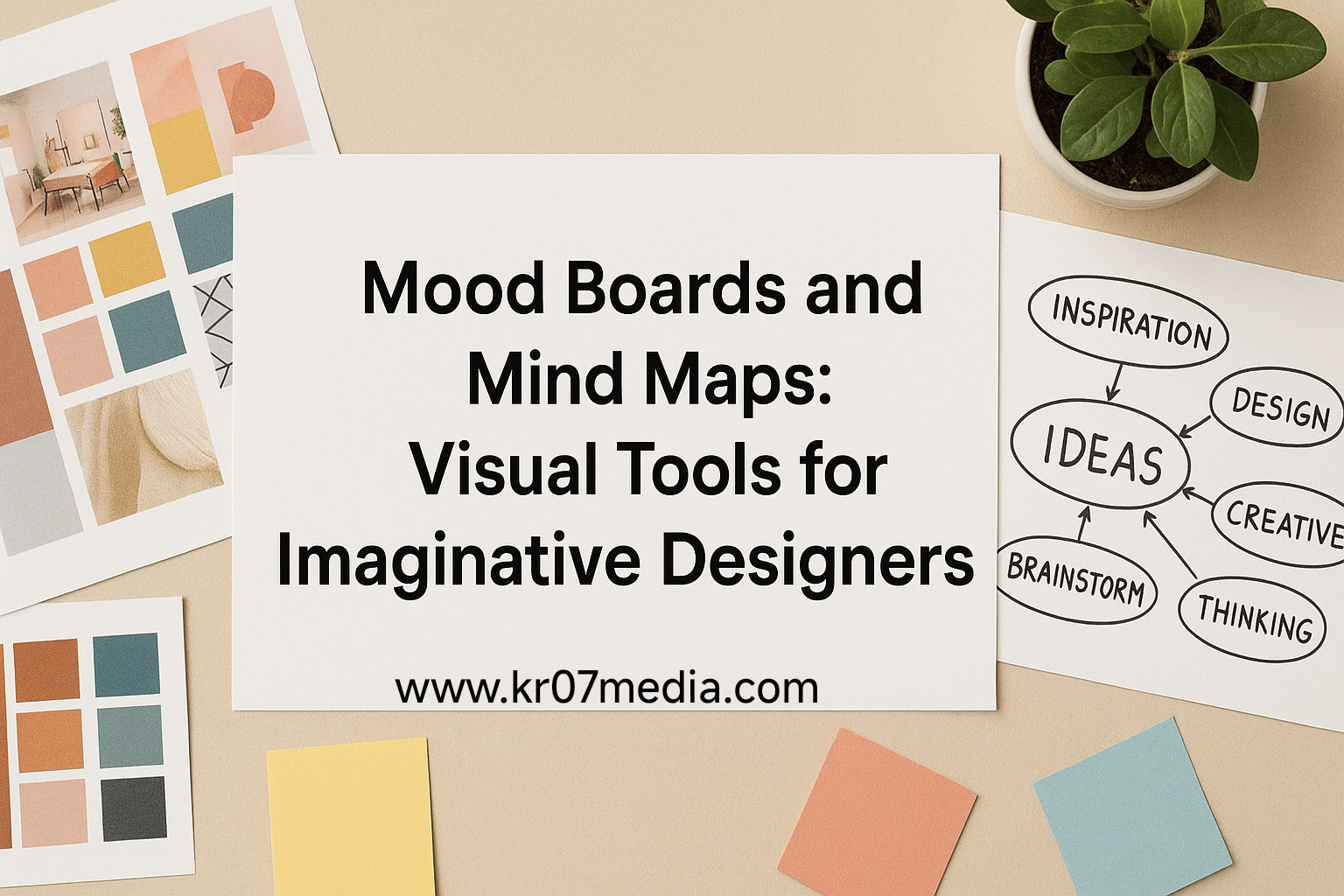In the fast-evolving world of design, imagination thrives on powerful visual aids. Among the most beloved—and effective—tools for creative professionals are mood boards and mind maps, each serving as a catalyst for inspiration, clarity, and innovation. These visual organizers empower designers to shape concepts, brainstorm ideas, and communicate visions with precision and flair.
What Are Mood Boards?
A mood board is a collage of images, colors, text, and sometimes textures, assembled to convey a specific feeling, atmosphere, or visual direction for a project. These collages can be digital or physical and are widely used in fields ranging from branding and fashion to UX and interior design.
Key Purposes:
•Inspiration: Sparks creative thought and encourages exploration of aesthetic possibilities.
•Concept Refinement: Helps clarify project themes and eliminate ambiguity before actual design begins.
•Communication: Visually communicates ideas to clients and teams, ensuring alignment before moving forward.
Typical Elements:
•Imagery (photos, illustrations, icons)
•Color swatches
•Typography samples
•Textures and patterns
•Tone-of-voice keywords
•UI and interaction inspirations
What Are Mind Maps?
A mind map is a visual diagram that organizes information around a central concept, with related ideas branching out in a non-linear, often hierarchical structure. Unlike mood boards, mind maps primarily use words, phrases, and sometimes simple graphics to lay out complex ideas and relationships.
Key Purposes:
•Idea Generation: Facilitates brainstorming by mapping out thoughts and sparking new connections.
•Information Structuring: Breaks down complex topics into manageable components for logical analysis.
•Collaboration: Helps teams see how ideas interrelate, making group creative work more organized and productive.
Typical Structure:
•Central Node: Main theme (e.g., a project name or problem statement)
•Branches: Major categories or sub-topics
•Child Nodes: Sub-details or further ideas
Mood Boards vs. Mind Maps
Mood boards are tactile and emotive, giving life to abstract ideas, while mind maps excel at logically organizing thoughts and uncovering connections.
How Designers Use These Tools
Mood Boards in Action
•Setting a Visual Tone: Pinpointing a brand’s identity or a website’s look and feel early in a project.
•Client Communication: Aligning expectations and minimizing misinterpretations before detailed design work starts.
Mind Maps in Action
•Brainstorming Sessions: Mapping all potential features for an app or website, then refining them by priority and feasibility.
•Project Planning: Outlining tasks, stakeholders, and timelines with a bird’s-eye view for efficient workflow management.
Benefits for Creative Flow
For Mood Boards:
•Jumpstarts creativity by engaging the senses.
•Refines vision, reducing blank-canvas syndrome.
•Offers a low-risk, editable draft for design direction.
For Mind Maps:
•Stimulates both analytical and creative thinking by visualizing connections.
Improves memory and recall of complex concepts.
•Breaks down silos, enabling collaboration and bigger-picture thinking.
Integrating Both Tools in the Design Process
Many imaginative designers use mood boards and mind maps together. For example, a team might start by mapping out all ideas via a mind map, then select key concepts to translate into mood board visuals. This dual approach blends structured ideation with vivid inspiration, leading to more robust and imaginative outcomes.
Conclusion
For designers seeking to push boundaries, mood boards and mind maps are indispensable visual tools. Mood boards attract the senses and clarify vision, while mind maps organize chaos and stimulate creative associations. Together, they make the design process more intuitive, collaborative, and—most importantly—imaginative.




